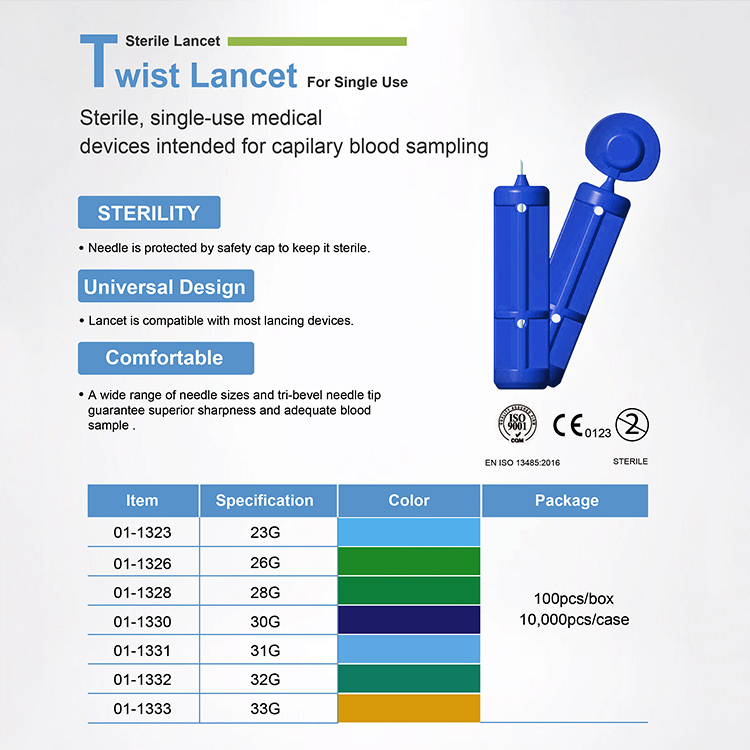Nov . 21, 2024 23:38 Back to list
hiv hbsag hcv test
Understanding HIV, HBsAg, and HCV Tests A Comprehensive Overview
In today's world, aware of the impact of viral infections such as Human Immunodeficiency Virus (HIV), Hepatitis B Surface Antigen (HBsAg), and Hepatitis C Virus (HCV), testing for these conditions is crucial for maintaining public health and individual well-being. Regular screening can lead to early detection, effective management, and can prevent the transmission of these viruses. This article provides an informative overview of these three tests, their significance, and what individuals should know.
HIV Testing
HIV testing is vital for diagnosing and managing HIV infections. HIV is a virus that attacks the immune system, specifically the CD4 cells (T cells), which help the body fight infections. If left untreated, HIV can lead to Acquired Immunodeficiency Syndrome (AIDS), a severe condition where the immune system is significantly weakened.
There are several types of HIV tests available, including antibody tests, antigen/antibody tests, and nucleic acid tests (NAT). Antibody tests identify antibodies to the virus, which may take weeks to months to develop after an infection. Antigen/antibody tests can detect both antibodies and antigens, typically providing results sooner than antibody-only tests. NAT tests look for the actual virus in the blood and are generally used for those who may have recently been exposed to HIV.
The Centers for Disease Control and Prevention (CDC) recommends that everyone between the ages of 13 and 64 get tested for HIV at least once, and those at higher risk should be tested more frequently. Early detection allows individuals to start antiretroviral therapy (ART), which can effectively manage the virus and significantly reduce the risk of transmission.
HBsAg Testing
HBsAg testing is used to determine if a person is currently infected with the Hepatitis B virus (HBV). Hepatitis B is a liver infection that can be acute or chronic. The presence of HBsAg indicates that the virus is actively multiplying in the body. Chronic infection can lead to serious health issues, including liver damage, cirrhosis, or liver cancer.
hiv hbsag hcv test

The test for HBsAg is typically performed via a simple blood test. If the test result is positive, further tests are often conducted to determine the stage of the infection, whether it is acute or chronic, and to assess liver function. The CDC recommends that individuals at risk for HBV—such as those with multiple sexual partners, individuals with a history of substance abuse, and healthcare workers—get tested for Hepatitis B.
Vaccination against Hepatitis B is available and is highly effective in preventing the infection. Awareness and vaccination can dramatically reduce the incidence of Hepatitis B worldwide.
HCV Testing
Similar to HIV and Hepatitis B, testing for Hepatitis C virus (HCV) is critical for individuals at risk. The Hepatitis C virus can lead to serious liver diseases, including cirrhosis and liver cancer. HCV often goes undiagnosed because many people may not exhibit symptoms until advanced stages of liver disease.
The initial screening test for HCV is typically an antibody test that checks for the presence of antibodies to the virus. If positive, a follow-up test, usually a HCV RNA test, is done to determine if there is an active infection. The CDC recommends screening for Hepatitis C for individuals born between 1945 and 1965 and anyone with risk factors such as injection drug use or received blood products before 1992.
Conclusion
In summary, understanding the importance of HIV, HBsAg, and HCV tests is fundamental in the fight against these viral infections. Regular testing not only helps in early diagnosis but also prevents the spread of these viruses, paving the way for effective treatment and management. Awareness, education, and prevention strategies, including vaccination and safe practices, play a significant role in reducing the burden of these diseases. By prioritizing testing, individuals contribute to their health and the health of their communities.
-
Malaria Pf Ag Rapid Test Kit - Quick & Accurate Detection
NewsAug.11,2025
-
Accurate Cardiac Marker CK-MB Rapid Test for Quick Results
NewsAug.10,2025
-
Premium Empty ABS Plastic Cassette for Test Strips
NewsAug.09,2025
-
Sterile Urine Cup: Accurate Specimen Collection for Labs & Home
NewsAug.08,2025
-
Malaria Pf/Pan Ag Rapid Test Kit for Fast, Accurate Diagnosis
NewsAug.07,2025
-
Rapid Canine Corona Test: Fast & Accurate Results
NewsAug.06,2025

